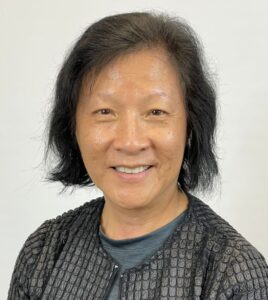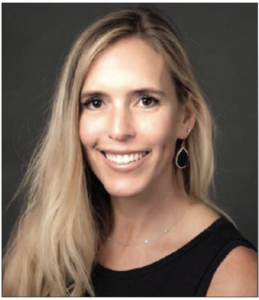Research objectives
Exploring innovative teaching strategies using Project MIND -Math Is Not Difficult, and promoting inclusive and effective math education for children with Autism, improving their long-term academic and life outcomes.
Keywords:
STEM, Education, High school, Female
Bio
Prof. Hui Fang Huang
Prof. Hui Fang Huang (Angie) Su, Ed.D., is a professor with the Department of Education at the Abraham S. Fischler College of Education and School of Criminal Justice. She was honored with the President’s Distinguished Professor of the Year Award 2017-2018. Dr. Su is the creator of Project MIND ® – Math is Not Difficult, a K-12 mathematics enhancement project currently being implemented in classrooms throughout the United States. She is the Past President of the Florida Distance Learning Association and the President of the Florida Association of Mathematics Teacher Educators (FAMTE). She is also a Florida mathematics standards framers and writers team member. Dr. Su has received numerous awards and recognitions, including the prestigious Presidential Award for Excellence in Mathematics and Science Teaching from the National Science Foundation, the William T. Dwyer Award for Excellence in Teaching, Palm Beach County Elementary Mathematics Teacher of the Year, Walmart Teacher of the Year, State of Florida’s Little Red School House Award for school principals (for Project MIND), and the Women of Distinction Award from the Soroptimist International. Prof. Hui Fang Huang (Angie) Su is assisted by: Dr. Jia Borror.
Dr. Jia Borror
Jia Borror received her doctoral degree in Educational Leadership in May of 2012. Dr. Borror serves as a faculty member at NSU’s Abraham S. Fischler College of Education and School of Criminal Justice. She has over 20 years of classroom teaching experience and holds National Board Certification. She teaches multiple courses in education at the Undergraduate, Master’s, and Educational Specialist level in the areas of Curriculum and Instruction, Teacher and Educational Leadership, and Early Childhood Education. Areas of research include early childhood, elementary education, STEM education, teacher leadership, bullying, and emotional resilience.
Dr. Teri Triguba Williams
Veteran educator with 30+ years’ experience, currently Lead Faculty for MS in College Student Affairs at Nova Southeastern University (NSU). Holds prior position as Director, Office of Experiential Education and Learning (ExEL). Built comprehensive experiential education program and FYE course for FTIC students. Shifted experiential education into a graduation requirement, driving educational and cultural change at NSU. Collaborated with National Society for Experiential Education (NSEE), establishing annual Experiential Education Academies (EEA) nationwide. Actively engaged with NSEE as a National Faculty and facilitated EEA workshops at universities and conferences. Catalyst for positive systemic change in Broward County Public Schools, impacting over 10,000 educators and school leaders.
Abstract
The present study investigated the effects of integrating STEM (science, technology, engineering, and math) with the arts on the academic and career outcomes of high school minority female students. This research aimed to address the persistent underrepresentation of women and minorities in STEM fields and bridge the achievement gap.
A methodological design was implemented, involving the integration of an arts-integrated STEM curriculum at a high school with a predominantly minority and female student population. The academic and career outcomes of the program participants were compared to a control group receiving traditional STEM education. Data collection involved surveys, assessments, and interviews, and quantitative and qualitative methods were employed for analysis. The study’s significance lies in demonstrating the effectiveness of arts integration in engaging and supporting the academic and career success of minority female students in STEM.
Methodology
The methodology for the research project aimed at raising STEM awareness among high school female students involves a systematic and comprehensive approach to engage and inspire the target population. The study sought to address the gender disparity in STEM fields by designing and implementing an intervention program promoting STEM interest and participation among female students. To achieve its objectives, the study employed a methodological design that involved the implementation of an arts-integrated STEM curriculum at a high school with a predominantly female and minority student population. This curriculum was designed to combine the principles and practices of STEM with artistic elements, such as visual arts, music, and theater, to create a more holistic and engaging learning experience.
Data collection for the study involved various methods, including surveys, assessments, and interviews. Quantitative methods were used to analyze the survey and assessment data, while qualitative methods were employed to analyze the interview data. This mixed-method approach allowed the researchers to understand the participants’ experiences and outcomes comprehensively.
The following steps outline the methodology employed:
- Program Design: The researchers developed a carefully crafted program incorporating various activities and initiatives to enhance STEM awareness. This included workshops, hands-on experiments, guest lectures by professionals in STEM careers, and a field trip to the university to visit STEM labs and meet with undergraduate students and professors in various STEM programs to create mentoring opportunities. In addition, the program was designed to provide exposure to different STEM disciplines, highlight successful female role models in STEM, and foster a supportive and inclusive learning environment.
- Selection of Participants: A diverse group of female high school students was selected to participate in the program. Efforts were made to ensure representation from different ethnic, socioeconomic, and academic backgrounds. Inclusion criteria include interest in STEM subjects or career aspirations in STEM fields.
- Implementation: The program was delivered from September through December. It involved a combination of in-school and out-of-school activities, carefully planned and coordinated by the research team and educators. The activities were designed to be engaging, interactive, and hands-on, allowing participants to actively explore STEM concepts and develop critical thinking and problem-solving skills.
- Data Collection: Various methods were employed to assess the program’s impact on STEM awareness and interest among the participants. Pre-and post-program surveys were conducted to measure changes in attitudes, perceptions, and self-efficacy related to STEM. Additionally, focus groups or interviews were conducted to gather qualitative data, allowing participants to share their experiences, challenges, and aspirations.
- Data Analysis: The collected data were analyzed using appropriate statistical techniques to quantify the participants’ STEM awareness, interest, and self-efficacy changes. Descriptive statistics were used to summarize survey data, while qualitative data from interviews or focus groups were analyzed thematically to identify common themes and patterns.
- Evaluation: The program’s effectiveness was evaluated based on the findings from the data analysis. The researchers compared the pre-and post-program data to determine if there was a significant increase in STEM awareness and interest among the participants. Additionally, feedback from participants, educators, and stakeholders was sought to gain insights into the strengths and weaknesses of the program and identify areas for improvement.
- Recommendations and Dissemination: Based on the findings and evaluation, recommendations were made to improve the program and enhance its impact on STEM awareness among high school female students. The research team disseminated the results through academic publications, conference presentations, and reports to education policymakers, school administrators, and relevant stakeholders to promote evidence based practices for increasing STEM awareness and engagement among female students.
By employing this comprehensive methodology, the team hoped to contribute to the existing literature and provide practical insights for educators, policymakers, and researchers interested in addressing the gender gap in STEM fields and fostering STEM awareness among high school female students.
The significance of this study lies in its potential to demonstrate the effectiveness of arts integration in engaging and supporting the academic and career success of minority female students in STEM fields. In addition, by combining STEM’s analytical and problem-solving skills with the creative and expressive aspects of the arts, the researchers hypothesized that the students would excel academically and develop a more substantial interest and passion for pursuing STEM-related careers.
The findings of this study have the potential to inform educational policies and practices, highlighting the importance of incorporating arts into STEM education, particularly for underrepresented groups. Furthermore, by providing empirical evidence of the positive effects of arts integration, the study contributes to efforts aimed at reducing the gender and minority gaps in STEM fields and promoting inclusivity and diversity in scientific and technological endeavors.
Background
Integrating arts into STEM education has shown promise in engaging and inspiring students across various studies (Hetland et al., 2007). By incorporating artistic elements such as visual arts, music, and theater into STEM curricula, students are provided with unique and creative avenues to explore and express STEM concepts. Integrating skills enhances students’ comprehension of scientific and technical principles and stimulates their imagination and creativity.
However, despite the potential benefits of arts-integrated STEM education, women still need to be represented in specific STEM disciplines, such as math and chemistry (NSB, 2019). This highlights the need for targeted efforts to foster interest and engagement among female students in these areas. By implementing a collaborative and inclusive environment that integrates arts into STEM education, this project aims to boost confidence, motivation, and interest among high school female students, particularly those from minority backgrounds.
The significance of this study lies in its potential to bridge the gender gap in STEM fields by demonstrating the effectiveness of arts integration in engaging and supporting the academic and career success of minority female students. Furthermore, by providing empirical evidence of the positive impact of arts-integrated STEM education, the study contributes to the growing body of research that promotes innovative approaches to address gender disparities in STEM.
Furthermore, integrating arts in STEM education offers a unique learning approach that can enhance students’ comprehension and expression of STEM concepts. By incorporating creative and artistic elements, students can develop a deeper understanding of complex scientific principles and apply their knowledge in novel and imaginative ways. This study’s findings have the potential to inform educational policies and practices, emphasizing the importance of arts integration in promoting STEM awareness and fostering inclusivity and diversity in STEM fields.
In 2019, the underrepresentation of women in STEM persisted, constituting only 29% of the science and engineering workforce in the United States (NSB, 2019). This gender disparity has been a longstanding issue, highlighting the need for proactive measures to promote diversity and inclusivity in STEM.
Encouraging girls to pursue STEM education is crucial for addressing this underrepresentation (NSB, 2019). Research has shown that providing female students with a supportive and inclusive learning environment can enhance their confidence, interest, and participation in STEM subjects. In addition, educators can empower girls to explore their potential in traditionally male-dominated fields by fostering an environment that promotes equality and removes barriers.
The background highlights the persistent underrepresentation of women in STEM fields and the significance of encouraging girls to pursue STEM education. Integrating arts into STEM education provides a promising approach to engaging and inspiring students, particularly female students from minority backgrounds. Unfortunately, according to the National Science Board, the underrepresentation of women in STEM has persisted, constituting only 29% of the science and engineering workforce in the United States (NSB, 2019). This gender disparity highlights the need for additional measures to promote diversity in STEM fields.
Encouraging girls to pursue STEM education is crucial for addressing this underrepresentation (NSB, 2019). Research has shown that providing female students with a supportive and inclusive learning environment can enhance their confidence, interest, and participation in STEM subjects. In addition, educators can empower girls to explore their potential in traditionally male-dominated fields by fostering an environment that promotes equality and removes barriers.
This study contributed to existing research by examining the impact and implementation of STEM activities connecting with various art forms. In addition, the researchers focused on arts-integrated STEM education on the academic and career outcomes of high school minority female students, aiming to reduce gender disparities in STEM fields and promote inclusivity and diversity in scientific and technological endeavors.
The researchers achieved the following results from the study:
They cultivated a collaborative and inclusive learning environment encouraging participation and teamwork among female high school students in STEM activities. By fostering collaboration, the project aimed to promote community and support among participants, allowing them to learn from and inspire one another.
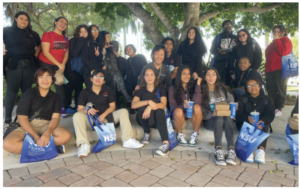
- They exposed female students to successful female role models in STEM through Arts infused activities. By connecting students with accomplished women/ scientists in STEM careers, the project aimed to inspire and empower participants, demonstrating that successful careers in STEM are attainable for women.
- They assessed and documented the effectiveness of arts integration in engaging and supporting high school female students’ interest and participation in STEM. In addition, the project sought to gather data on the impact of arts integrated STEM education on students’ attitudes, perceptions, and self-efficacy in STEM fields.
- They increased interest and enthusiasm for STEM subjects among female research sites/ school students. In addition, by providing hands-on, creative, and innovative learning experiences, the project motivated participants to develop a more profound interest in STEM fields and a greater appreciation for their real world applications.
- They enhanced problem-solving and critical thinking skills among participating students. Through the integration of arts, the project fostered creative approaches to problem-solving and encouraged students to think outside the box when tackling STEM challenges.
- They increased confidence and self-efficacy among students in pursuing STEM careers. In addition, by providing a supportive and inclusive learning environment and exposure to successful female role models in STEM, the project participants developed a greater belief in their abilities and potential to succeed in STEM fields.
- The team created greater awareness and understanding of diverse STEM fields and potential career pathways. Through workshops, activities, and exposure to different STEM disciplines, the project broadened students’ knowledge and exposed them to various STEM-related career opportunities.
- The research team documented best practices and lessons learned in integrating arts into STEM education. In addition, the project contributed to the body of knowledge on effective strategies for promoting STEM interest and participation among high school female students, specifically focusing on integrating arts.
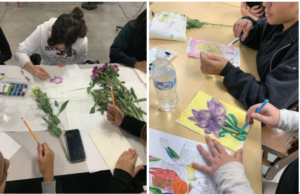
By achieving these objectives and expected outcomes, the project made significant progress in increasing the interest, participation, and confidence of high school female students in STEM fields, ultimately addressing the gender disparity and promoting diversity and inclusivity in STEM education and careers.
Sample STEM activities with Arts Integration
Various engaging activities were implemented to motivate 9th-grade female students and integrate the arts into STEM subjects. The following are example activities focusing on Chemistry, Biology, Physics, Technology, Mathematics, and Food Science, with the addition of incorporating Tai-Chi to demonstrate the connections in STEM.
1. Chemistry:
- Artistic Molecules: Students created artistic representations of molecules using various art materials, showcasing their understanding of chemical bonding and molecular structures.
- Culinary Chemistry: Students explored chemical reactions and changes during cooking or food preparation, linking chemistry concepts with culinary arts.
2. Biology:
- Nature-inspired Art: Students collected samples of leaves, flowers, or other natural materials and used them to create botanical artwork, emphasizing the connection between biology and art.
- Biomimicry Design: Students studied organisms and their adaptations and then used that knowledge to design and create innovative products inspired by nature.
3. Physics and Engineering
- Kinetic Sculptures: Students designed and constructed sculptures that utilize basic physics principles, such as balance, motion, and forces, while incorporating artistic elements to create visually captivating works.
- Light and Color: Students explored the properties of light and color through experiments and created artwork demonstrating their understanding of concepts like reflection, refraction, and color mixing.
4. Technology:
- Digital Storytelling: Students used digital tools to create multimedia presentations or videos that showcase the intersection of technology and storytelling, highlighting the importance of technology in various fields.
- Coding Art: Students learned coding concepts and used programming languages to create interactive and visually appealing artwork, demonstrating the fusion of technology and creativity.
5. Mathematics:
- Mathematical Patterns in Art: Students investigated mathematical patterns found in various art forms, such as tessellations, fractals, or Fibonacci sequences, and created artwork based on these patterns.
- Data Visualization: Students collected and analyzed data, then used graphical representations, infographics, or interactive visualizations to present their findings artistically.
6. Food Science
- Molecular Gastronomy: Students used various techniques to explore the science behind food preparation.
- Food Photography: Students learned about composition, lighting, and angles in photography while capturing visually appealing images of food, linking food science and visual arts.
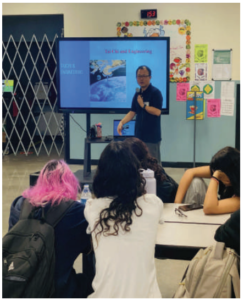
Integration of Tai Chi
Incorporating Tai Chi into the activities helped demonstrate the connections between STEM and movement, balance, and the human body. For example, students engaged in Tai Chi exercises learned about the physics principles behind movement and balance, and explored the scientific benefits of Tai Chi on mental and physical health. In addition, they created artistic representations or performances that showcase the integration of STEM principles with Tai Chi movements.
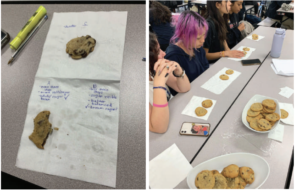
Combining these activities allowed students to engage in hands-on experiences that intertwine STEM subjects with artistic expression. This interdisciplinary approach fosters creativity, critical thinking, and problem-solving skills while highlighting the relevance and interconnectedness of STEM in various aspects of everyday life.
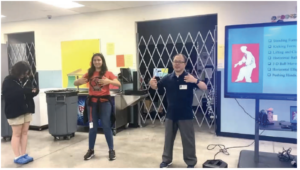
Data Analysis and Conclusion
This project aimed to address the underrepresentation of high school female students in STEM fields by creating a collaborative and inclusive environment that integrates the arts. The target population consisted of thirty to forty minority female high school students from diverse backgrounds uncertain about pursuing STEM careers. The project was implemented with the school’s leadership team and STEM experts.
The project team carefully recruited the participants, considering their backgrounds, interests, and aspirations. In addition, efforts were made to ensure diversity and inclusivity, allowing students from various ethnic, socioeconomic, and academic backgrounds to participate.
The project team collaborated with STEM experts to design and organize hands-on learning experiences. Workshops, activities, and experiments were developed to provide creative and innovative approaches to learning STEM subjects. Integrating arts into the curriculum allowed the participants to explore STEM concepts through visual arts, music, theater, and other artistic mediums. The project aimed to stimulate the participants’ imagination, foster critical thinking, and develop problem-solving skills by incorporating creative elements.
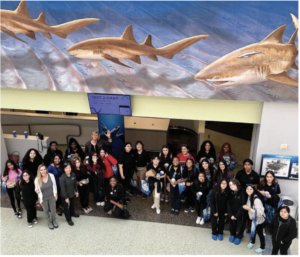
The project’s primary objective was to increase the confidence and motivation of the participants to pursue careers in STEM fields. By providing a supportive and inclusive learning environment, the project aimed to boost the participants’ self-belief, challenge gender stereotypes, and demonstrate the diverse range of opportunities available in STEM careers.
The effectiveness of the project was evaluated through a variety of methods. Student assessments, including pre-and post-program surveys, were conducted to measure STEM knowledge, attitudes, and self-efficacy changes. Focus groups and interviews were also conducted to gather qualitative data, allowing participants to share their experiences, challenges, and aspirations. The evaluation aimed to assess the impact of the activities and the overall project on the participants’ interest, engagement, and confidence in pursuing STEM careers.
Through the project’s activities and evaluation, the research team aimed to contribute to the existing knowledge on innovative approaches to STEM education and its potential to empower and inspire minority female students. By promoting diversity and inclusivity in STEM fields, the project sought to reduce the gender gap and open new academic and career opportunities for the participants.
Data Analysis
Correlation Analysis was conducted using data from the S-STEM survey, specifically from 9th-grade female students. The data collected pertains to their abilities and attitudes toward math, science, engineering, and technology. Correlation analysis is a method used to measure the strength of the relationship between variables, with a high correlation indicating a strong association. The STEM areas are grouped into math, science, and engineering/technology. The analysis results can be used to determine if there is a connection between students’ abilities and attitudes within each subject. For instance, it investigates whether a student who expresses a positive attitude toward math also demonstrates a positive attitude toward their math skills.
Correlation analysis can be performed using different methods, with the Pearson and Spearman correlation being the most popular. Both ways assess the degree of association between variables, but the Spearman correlation is suitable for ordinal data. In this analysis, the Spearman correlation is utilized, considering two questions simultaneously, where one question relates to the ability and the other two feelings. The questions should also pertain to the same subject and have the same perspective (positive or negative).
Two statements from each subject are compared to determine the correlation between students’ attitudes and abilities. For math, the statements “I like math” (M1) and “I can get good grades in math” (M8) are analyzed. In the case of science, the questions “I am sure of myself when I do science” (S1) and “I would consider a career in science” (S2) are considered. Lastly, for engineering and technology, the questions “I like to imagine creating new products” (ET1) and “I am good at building and fixing things” (ET3) are used.
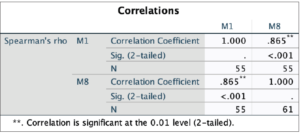
Several aspects of the analysis can be examined to determine the strength of the association between variables. The correlation coefficient, ranging from -1 to +1, indicates the nature of the relationship. A positive coefficient signifies a positive relationship, while a negative coefficient indicates a negative relationship. A coefficient of 0 implies no connection between the variables. The significance value is also crucial as it helps determine if the result is statistically significant.
Notably, the correlation coefficient at the intersection of the questions for math is .865, indicating a positive relationship between liking math and achieving good grades in math. The superficial significance level of <.001 supports this correlation.
Similarly, the coefficient of .926 reveals a high positive correlation between students who are sure of themselves in science and those who would consider a career in science. Once again, the significance level is <.001, confirming this correlation.
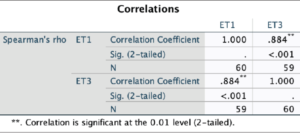
Regarding engineering and technology, the correlation coefficient of .884 demonstrates a positive relationship between students who enjoy imagining new products and those skilled at building and fixing things. The significance level, <.001, aligns with this correlation.
Identifying correlations between variables is crucial for various research problems. In this case, examining the data for correlations allows us to determine if a positive relationship exists between students’ attitudes toward a particular subject and their abilities. This suggests that students with positive attitudes are likely to perform well, while those with negative attitudes may not excel. Therefore, a Correlation Analysis was performed using the data collected through the S-STEM survey.
This project provided an inclusive and collaborative environment for high school minority female students to explore and engage with STEM subjects through arts integration. The project aimed to increase the participants’ confidence and motivation to pursue STEM careers by fostering creativity, critical thinking, and problem-solving skills. The project’s effectiveness was assessed through assessments, surveys, and qualitative data collection methods, ultimately contributing to understanding effective strategies for promoting STEM interest and participation among high school female students. This project aimed to increase the interest and involvement of high school female students in STEM fields through a collaborative and inclusive environment that integrates the arts. Thirty to forty minority female high school students from diverse backgrounds, uncertain about pursuing STEM careers, were recruited by the school leadership team to participate in the project. The project team collaborated with STEM experts to create and organize hands-on learning experiences, fostering the development of creative and critical thinking and problem solving skills among the participants. The primary objective was to increase the confidence and motivation of the students to pursue careers in STEM fields. The project’s effectiveness was evaluated through student assessments, surveys, and focus groups to gauge the impact of the activities and the overall project.
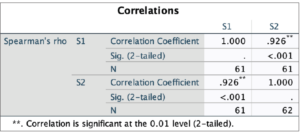
Overall, this research sheds light on an innovative approach to STEM education and its potential to empower and inspire minority female students, ultimately leading to improved academic performance and expanded career opportunities in STEM fields.
Authors
Hui Fang Huang (Angie) Su, Ed.D., is a Professor of Mathematics Education at Fischler College of Education and School of Criminal Justice.
Teri William, Ph.D., is an Assistant Professor at the Fischler College of Education and School of Criminal Justice.
Jia Borror, Ed.D., is an Associate Professor at the Fischler College of Education and School of Criminal Justice.
Acknowledgment
We want to thank our expert presenters for their contribution to the project in the respected fields:
Arthur Sikora, Ph.D., Assistant Professor, Department of Chemistry and Physics. Halmos College of Arts and Sciences, Nova Southeastern University
Yueting Wan, Ph.D., Assistant Professor, Department of Chemistry and Physics. Halmos College of Arts and Sciences, Nova Southeastern University
Julie Torruellas Garcia Ph.D., Professor, Department of Biological Sciences, Halmos College of Arts and Sciences, Nova Southeastern University.
References
National Science Board (NSB). (2019). Science and Engineering Indicators 2019. Arlington, VA: National Science Foundation.
AAUW (American Association of University Women). (2010). Why so few? Women in science, technology, engineering, and mathematics. Washington, DC: AAUW.
Hetland, L., Winner, E., Veenema, S., & Sheridan, K. (2007). Studio thinking: The real benefits of visual arts education. New York, NY: Teachers College Press.


